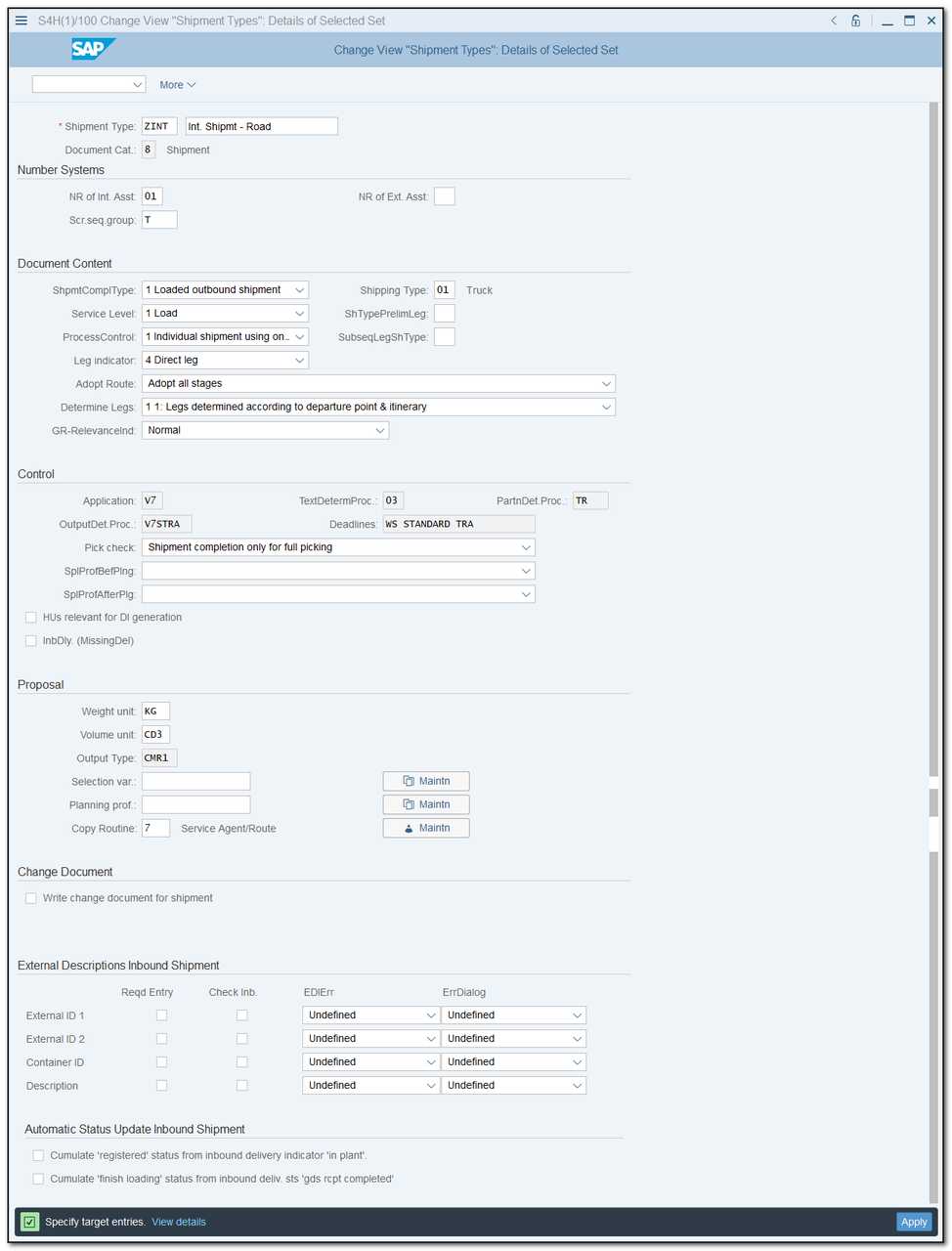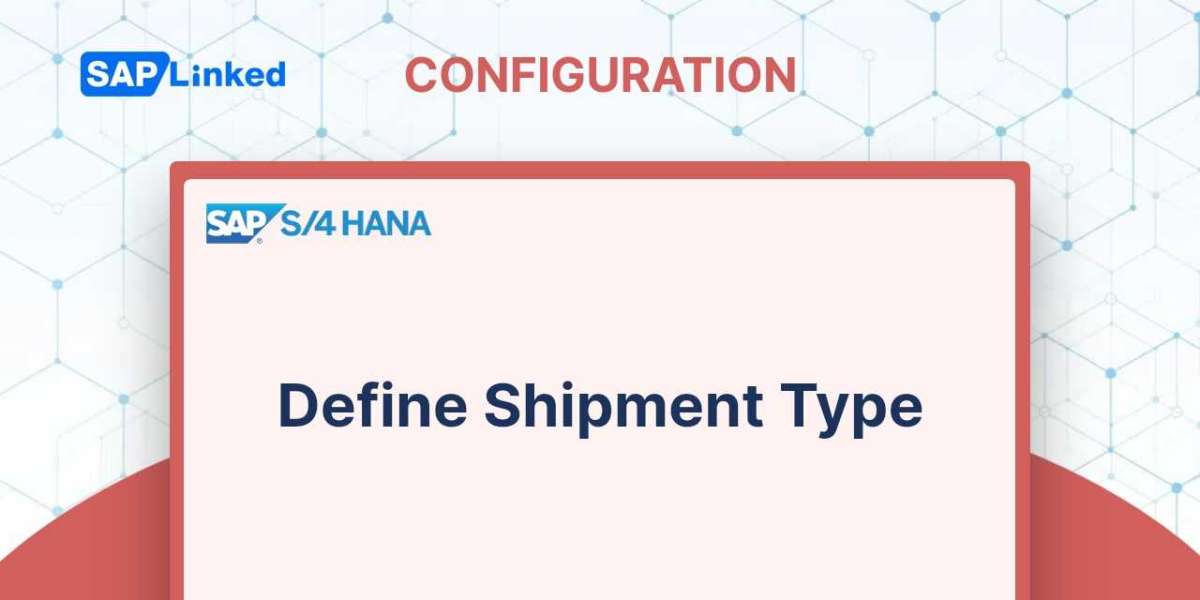Menu path for configuring the shipment type document is:
IMG ➢ Logistics Execution ➢ Transportation ➢ Shipments ➢ Define Shipment Types.
Define the shipping type's four-character alphanumeric code and description. Some of the crucial fields that must be configured are shown in Figure 1.
Number Systems tab For the shipment documentation that will be generated, you can define an internal and external number range on this tab. Any other number range options that we discussed previously are the same as this one.
Document Content This tab, which thoroughly explains the shipment type, may be the most significant one. Some of the significant settings on this tab include the following:
Shipment Completion Type The type of shipment being made is specified in the field ShpmtComplType. You can indicate whether the shipment is coming in or going out, as well as whether it is full or empty.
Shipping Type The Shipping Type field specifies whether the shipment will be sent by land, air, or another mode of transportation.
Process Control Process Control specifies how the shipping will be planned. Here, you have the following choices:
- Individual Shipment With Single Mode Of Transport.
- Individual Shipment With Multi Mode Of Transport.
- Collective Shipment With Single Mode Of Transport.
- Collective Shipment With Multi Mode Of Transport.

Figure 1 Defining the shipment type
Leg Indicator You can indicate whether a leg is a direct leg of a shipment, a primary leg, a mail leg, or a subsequent leg of a transportation chain in the field Leg indication. A single shipment document will be used to complete the full process if you choose Direct Leg or Return Leg. However, whether you choose Primary Leg, Main Leg, or Subsequent Leg, a transportation chain with numerous shipments that are connected to finish the shipment will be created. The fields ShTypePrelimLeg and SubseqLegShType additionally allow you to choose the preliminary and subsequent legs' mode of transportation.
Determine Legs The system will attempt to organize the legs of the shipment depending on the rule you choose in the Determine Legs section. For instance, leg determination for a collective shipment will be based on the sequence of departures and destinations if type 1 (1: Legs Determined According To Departure Point Itinerary) is selected. If you select Leg Determination in the shipment document, the system will automatically check the points of origin and destination for each delivery and suggest the phases of the journey. Manual changes can be made to the proposal. It should be noted that determining legs is not an optimization algorithm. Instead, it is a straightforward tool that can be used to generate legs based on the principles you set.



